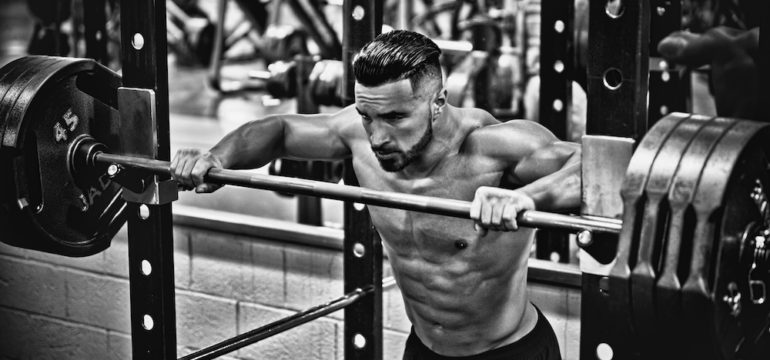
Losing Weight by Lifting Weights
The primary goal of just about every individual who steps inside a gym or hires a personal trainer is to lose fat and build muscle, which is why it’s so confounding that so many individuals forego weights in favor of cardio. It’s even more confounding when those that do opt for weight-lifting, don’t lift in a manner that promotes efficient weight loss.
Best Practices for Weight-Lifting for Weight-Loss
Warm-up as if your weight loss depended on it. Because it does.
Too many fitness seekers skip the warm-up, justifying their inaction by claiming they don’t have time for a warm-up. The truth, however, is you don’t have enough time not to warm up.
In addition to increasing your heart rate and warming up your muscles, warming-up prepares the neuromuscular system to perform better, and the anaerobic system to recover faster. You also burn calories during the warm-up.
Start your warm-up with light aerobic activity and move into dynamic movement–squats, lunges, high knees, incline push-ups. Focus your dynamic movements on the muscles you’ll be using during the weights workout.
Focus on large muscle groups.
We all want nice rounded, defined biceps to go along with our sculpted calves, but isolating small muscle groups primarily won’t get you the body you want.
When it comes to fat loss, pull-ups, squats, deadlifts, lunges, hip thrusters, bench presses, and other exercises that engage large muscles group make weight loss happen. And don’t be fooled into thinking your biceps and shoulders will shrivel. They get a work out as well. The next time you do a pull-up, for example, notice how it’s not just the back that gets worked. You’ll feel it in your biceps or triceps, your shoulders, and your abdominals too. And try doing a squat without your calves getting worked. You can’t.
You don’t have to eliminate bicep curls or other exercises that focus on smaller muscle groups. You just need to focus on large muscle group exercises by doing them early and often in your workouts.
When does more weight mean less weight? When you’re working out.
This is where the “If I lift heavy weights I’ll get bulky” myth needs put to rest. Heavy lifting with fewer reps builds lean muscle. In addition to looking good, lean muscle raises your body’s metabolism, which allows for more efficient fat-burning.
Instead of lifting light weights 15-20 times, lift heavier weights 6-8 times. Make sure, however, that you are able to lift with proper form. If you can’t complete 6-8 reps with proper form, lower the weight, even if it means doing more reps at the lower weight. After all, you won’t lose any weight sitting on the sofa because you injured yourself due to bad form.
Rest between sets.
Don’t be in such a hurry. It’s hard to convince your brain that you’re serious and committed to cutting fat and building muscle when you’re in such a hurry to get through the workout.
To get more from your workout, take breaks between sets–approximately 30-90 seconds, depending on the exercise and your experience. In addition to having more energy to perform each rep with your best effort for optimal fat-loss results, taking solid breaks between reps help prevent injuries due to over-training.
You can’t out-lift your fork.
Don’t kid yourself. It doesn’t matter how awesome or frequent your workouts are if you undo it all with poor nutrition and over-eating. Up your protein intake and get rid of sugars, simple carbs, and saturated fats.
If you really want to dial up the workouts, cut the fat, and gain muscle, check out Bodies by Brandon. Brandon has a unique range of attributes you will not find in the typical personal trainer. His life is devoted to making you look and feel better than even you thought possible.
